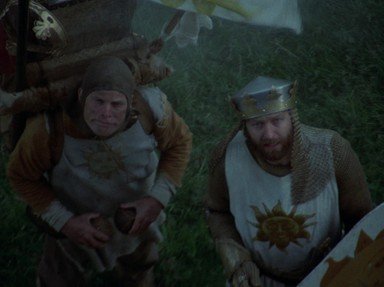
Which Monty Python Film Was That? Quiz
See if you can place these twelve Monty Python skits in the movie where they appear. Knowing the airspeed of a coconut-laden swallow might be helpful for this quiz, or possibly knowing the meaning of life. Good luck!
A classification quiz
by BigTriviaDawg.
Estimated time: 3 mins.
- Home
- »
- Quizzes
- »
- Movie Trivia
- »
- Movies L-P
- »
- Monty Python